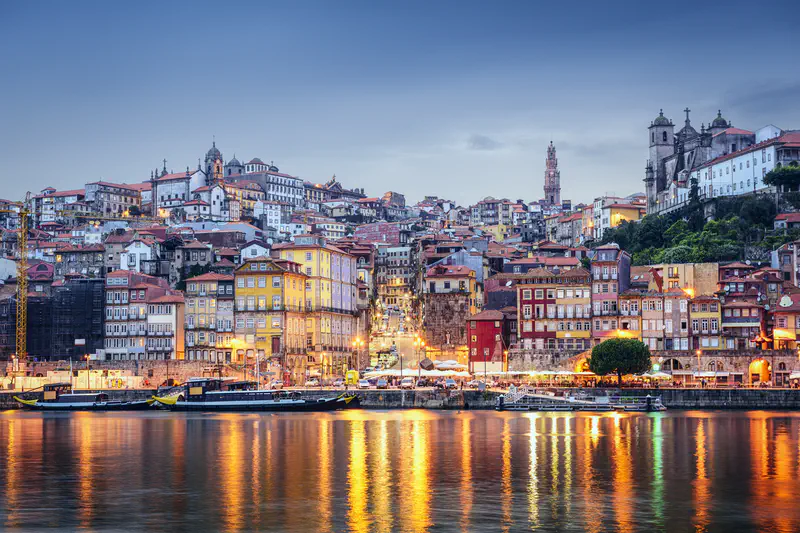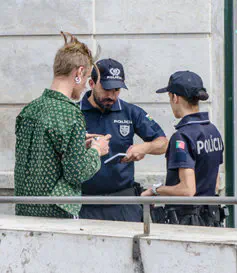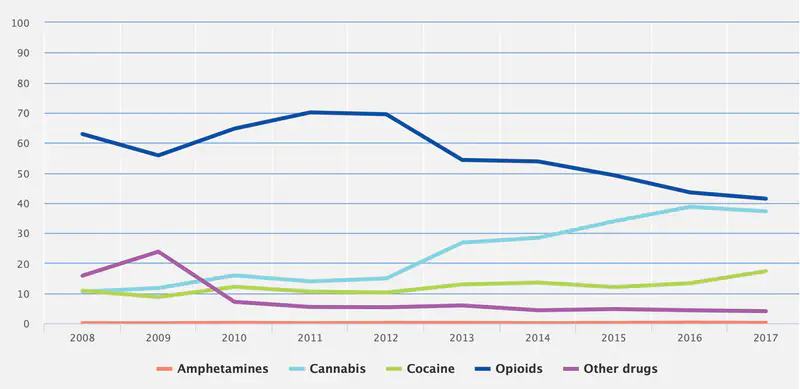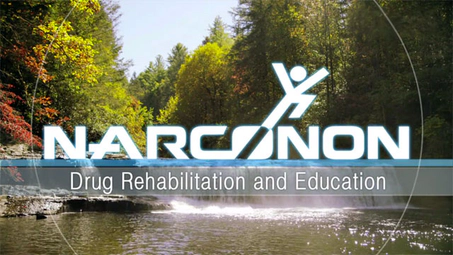Portugal’s Drug Abuse, Addiction and Treatment Situation

Whenever there’s a conversation about the legalization of drugs, the same three countries are always mentioned: The Netherlands, Uruguay and Portugal. Someone will claim that these three countries legalized drugs and had acceptable results. It’s not actually true in any of these three countries.
If Portugal did not legalize drugs, what did they do? In 2001, they decriminalized the possession of cannabis, cocaine, heroin and other drugs when they are for a person’s own use.1 The possession of these drugs is still illegal but it won’t get a person arrested.
If a person is found to be trafficking or selling these drugs, this is still a criminal offense and the person will be arrested and charged. Jail terms for traffickers range from one year to 14 years.2

So does this change in Portugal’s laws mean that a person is free to use any drug they want? It does not. If they are found with drugs, they are called before one of the Commissions for Dissuasions of Drug Addiction. The Commission may decide that the person appearing before them for the first time should receive either a warning or a fine. If the individual decides to enter treatment for their drug use, any fine may be suspended. Their treatment is paid for by the government.2
If a person appears before the Commission again or is found to be addicted, the Commission can impose more sanctions but the real point of the system is to direct drug-using individuals to treatment programs so they can stop using drugs. The Commission also has the power to suspend the license of certain professions (doctors, lawyers, taxi drivers) or suspend public benefits. They may also require periodic reports from an individual showing that there is no further drug use.
The most important point to Portugal’s decriminalization may have been made by João Goulão, Portugal’s director-general of drug policy: “Decriminalization is not a silver bullet. If you decriminalize and do nothing else, things will get worse.” 2 This quote points out the necessity for establishing channels to send people to treatment if they can’t stop using drugs on their own.
This is only a brief look at Portugal’s system. Naturally, there is much more to it. But it serves to show that the point of their system is to direct people to treatment and, above all, eliminate drug abuse.
Has it worked?
Cannabis
The rate of cannabis use in Portugal is above the EU average at about 5% of the population each year.3 But isolating the population aged 15 to 34, 8% have used the drug in the last year.4
Cannabis is the drug causing 37% of treatment arrivals. Roughly two-thirds of these people were arriving for the first time. The other third were making a repeat trip to rehab.
The number of people starting drug treatment for cannabis has increased from just over 400 in 2007 to more than 800 in 2017. Entrants to treatment for cannabis are overwhelmingly male.
There’s much more of the potent cannabis resin circulating in the country compared to herbal cannabis. In 2017, there were 14,800 kg of resin seized compared to 410 kg of the leafy product.
Heroin
As opposed to most other EU countries, heroin is the top drug sending people to treatment programs, with 39% of those arriving in treatment citing heroin as their primary drug. (In many other EU countries, the top drug is cannabis.) However, as the number of admissions to rehab for cannabis has been increasing, the number admitted for opioids has been falling, until the two statistics have almost met in the middle, as you can see here.

Courtesy of the European Monitoring Centre for Drugs and Drug Addiction
The EMCDDA estimates that there are more than 33,000 high-risk opioid users in the country. The rate of high-risk opioidusers is 5.2 per 1000 citizens.4
In 1999 before decriminalization was implemented, Portugal5 had a much worse opioid addiction problem. An estimated 100,000 people were addicted to heroin. Hundreds died.2 These days, between 25 and 30 people die each year in this country of 6.7 million.4 Now Portugal’s overdose deaths are the second-lowest in the EU.
When those in recovery enter a program that offers opioid substitution therapy (OST), most of them receive methadone rather than buprenorphine. Nearly 17,000 people receive OST each year.
Stimulants
Of the stimulant drugs, cocaine is the third-most frequently cited drug sending people to rehab.4 About 17% of those entering rehab say that cocaine is their primary addiction.
The trends of people using cocaine, amphetamine or MDMA (ecstasy) have been declining since 2007. Each of these stimulants is used by less than 1% of the population aged 15 to 34. This holds true even if you isolate the age group most likely to use these drugs—24 to 34.
Students in Portugal
According to the ESPAD study of 15- and 16-year-old students, fewer of these young people smoke cigarettes, drink alcohol, or use cannabis, tranquilizers, inhalants or other drugs than students in other EU countries.
Mortality
Drug-related deaths, although small in number, commonly result from heroin or methadone.4 In most cases, more than one drug was being used at the time of death, with the other drugs usually being cocaine, one of the amphetamine-type stimulants, and alcohol.
The rate of drug-related deaths was 4 per million, a far cry from the EU average of 22 per million. Those most likely to succumb to a drug death are from the group aged 45 to 49, and those lost are four times as likely to be male than female.
Prevention and Treatment
Early in this article, we quoted João Goulão, Portugal’s director-general of drug policy, when he said that decriminalization alone will not resolve the drug problem. He then said, “The most important part was making treatment available to everybody who needed it for free. This was our first goal.” 2 Without this second step, it’s doubtful that Portugal would have seen the improvement they have seen.
Portuguese authorities also aggressively offer drug prevention services, primarily information on drugs, having special information days about drugs, sending officers to schools, and offering advice to help people improve their social skills.4
Many people in authority in many EU countries know that offering enough treatment and prevention will help turn the tide against drug abuse. But few countries have committed themselves to changing their situations from top to bottom as Portugal has. Of course, their situation is not perfect, but it is far better than when they began this decriminalization adventure in 2001.
Sources:
-
Glen Greenwalkd—Cato Institute (2009), “DRUG DECRIMINALIZATION IN PORTUGAL—Lessons for Creating Fair and Successful Drug Policies”. Cato Institute Whitepaper (PDF) ↩︎
-
Daphne Bramham—Vancouver Sun (2018), “Decriminalization is no silver bullet, says Portugal’s drug czar”. Vancouver Sun Opinion Piece ↩︎ ↩︎ ↩︎ ↩︎ ↩︎
-
United Nations Office on Drugs and Crime (2019), “Annual prevalence of drug use (latest year available) relative to the 2019 global estimate”. Portugal, Drug demand ↩︎
-
European Monitoring Centre for Drugs and Addiction (2019), “Portugal Country Drug Report 2019”. EMCDDA Report (PDF) ↩︎ ↩︎ ↩︎ ↩︎ ↩︎ ↩︎
-
CBC.CA “How Europe’s heroin capital solved its overdose crisis” News Article ↩︎

